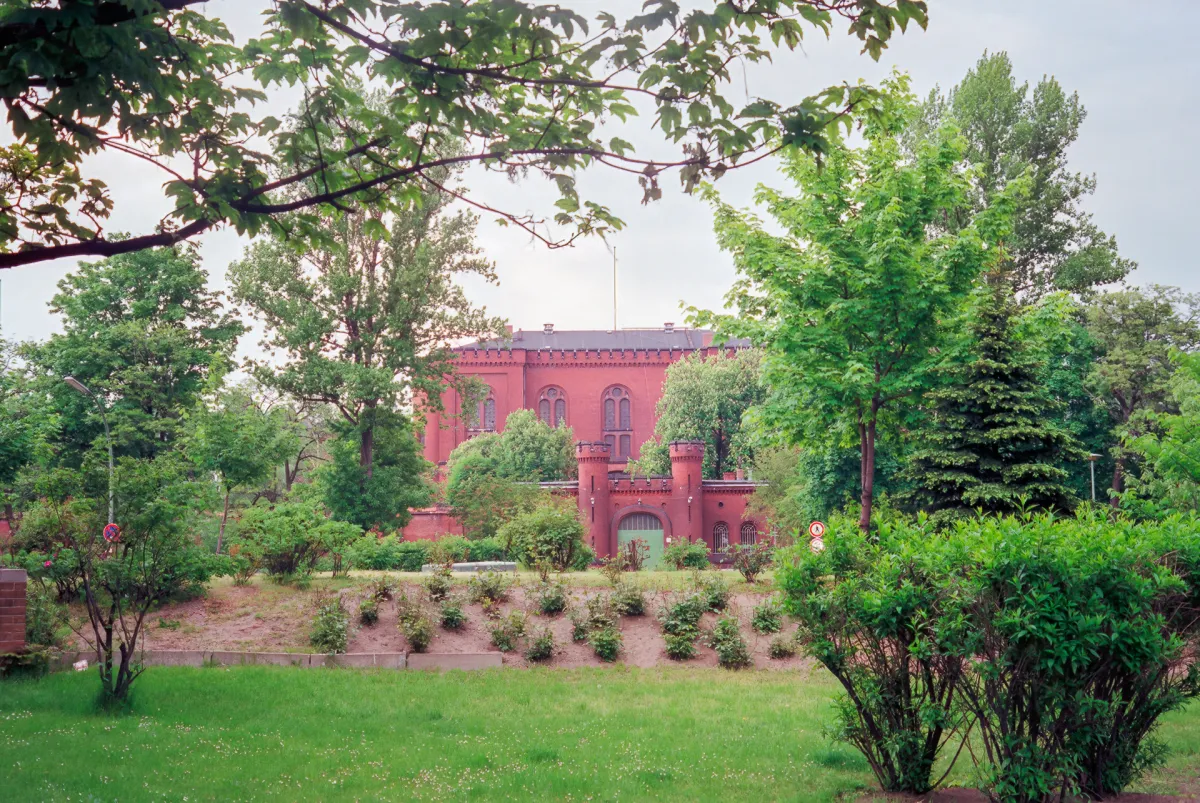Introduction
Tucked away in the outskirts of Berlin, Germany, was Spandau Prison, a fortress that, for seven long decades, stood as a symbol of political repression and as the final chapter of some of the most notorious figures of the 20th century.
At the time of this photo, Rudolf Hess was the sole inmate…digitised negative

A Dark Past
Constructed in 1876, Spandau Prison initially served as a military detention centre of the Prussian Army. From 1919 it was also used for civilian inmates and it held up to 600 inmates at that time.. However, its role and significance changed dramatically after World War II. Following the end of the war, Spandau Prison became the site of internment for seven high-ranking Nazi officials convicted during the Nuremberg Trials in 1946. Among the prisoners were prominent figures such as Rudolf Hess, Albert Speer, and Karl Dönitz.
The Allied authorities established a unique regime for the prison. Rather than facing execution, the convicts were given prison sentences ranging from 10 years to life imprisonment. The concept of shared custody was implemented, with each occupying power – United States, Soviet Union, France, and the United Kingdom – providing a prison governor and staff to maintain the facility. The guards were rotated every month, ensuring no individual power could exert influence over the prisoners.
The Cold War Era
As the world transitioned into the Cold War era, Spandau Prison took on a new role. With the conviction of the Nazi war criminals, the prison became a microcosm of East-West tensions. The Soviet Union, in particular, maintained a strong presence within the facility, reflecting the ideological rivalry between East and West. The inmates were subjected to strict surveillance and isolation, with limited contact with the outside world.
The Last Prisoner
The years turned into decades, and the walls of Spandau Prison held their captives in a state of suspended animation. Over time, some prisoners passed away, while others were released for health reasons or due to their sentences coming to an end. Finally, by 1987, Rudolf Hess, the last remaining inmate, was the sole occupant of the prison. As the only remaining prisoner, Hess spent his days alone, locked away from the outside world.
Demolition and Legacy
In 1987, Rudolf Hess died under mysterious circumstances, and with his passing, Spandau Prison lost its final prisoner. Faced with the prospect of the prison becoming a pilgrimage site for neo-Nazis, the Allied authorities decided to demolish the building in 1987. A shopping centre was built on the site. Today, only a small portion of the prison’s outer wall remains, serving as a poignant reminder of its dark past.